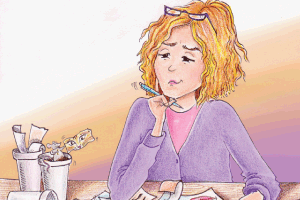The Making of a Villain
| February 20, 2013 In old literature the forces of good and evil are very well defined. The wonderful princess is always fighting the devil. Black and white are set apart. Society in those purer times didn’t accept monsters within its midst. But the truth rarely shows a person to be one-dimensional driven only by the evilness within. Simplifying evil certainly makes it more palatable but it obscures that fact that we all have a yetzer hara that since Adam and Chava good and bad have always been intertwined.
In old literature the forces of good and evil are very well defined. The wonderful princess is always fighting the devil. Black and white are set apart. Society in those purer times didn’t accept monsters within its midst. But the truth rarely shows a person to be one-dimensional driven only by the evilness within. Simplifying evil certainly makes it more palatable but it obscures that fact that we all have a yetzer hara that since Adam and Chava good and bad have always been intertwined.
For a novel to be successful the writer must make you see the antagonist as multidimensional. His evil is murky mixed with the good as all humans are. As one writer put it “The best antagonists are the ones who leave the reader thinking Am I supposed to like this person?” And when one real person (the multidimensional hero) fights with another real person (the multidimensional antagonist) the reader will be up until the break of dawn fighting for good like Yaakov fought Eisav.
“Every person has many personalities in him” says Mishpacha editor-in-chief Rabbi Moshe Grylak author of several best-selling thrillers including The Spider’s Web under the pen name Chaim Eliav. “If two people are in conflict it can’t be that one of them is not a person with his own side. Every person has a nekudas ha’emes the point that when uncovered from all the dirt surrounding him will point him in the right direction. The villain might even end up a ‘baal teshuvah’ at the end.”
Riva Pomerantz prolific writer and author of the “Diamond Dust” serial has created her fair share of villains. “I write and live according to the Torah’s approach namely that every human being has the ability to overcome his or her challenges — as long as the candle burns it’s possible to fix. I always sincerely hope that my antagonists will see the wrong in their ways and change directions.
“In Mottie’s case in the serial ‘Charades’ circumstances forced him to his knees and he went a long way in making amends and reformatting his life. In the case of Deeni the antagonist in ‘Diamond Dust ’ we do not yet see if she’s aware of her bullying never mind if she will make any attempts to apologize to Yalli for all the pain she’s caused her.
“As my stories unfold and my characters grow I am always hopeful for teshuvah and amends. But it doesn’t always happen that way. Teshuvah needs self-insight awareness and self-honesty which I do not know if Deeni and people like her truly possess.”
Rabbi Grylak contends that “chaviv adam shenivra b’tzelem (beloved is man for he was created in G-d’s image)” applies to the most scar-ridden hood-covered scheming person. That’s one of the reasons we want to follow the antagonist around — to see his ultimate fate to find out whether or not good will prevail.
To read the rest of this story please buy this issue of Mishpacha. To sign up for a weekly subscription click here.
Oops! We could not locate your form.

